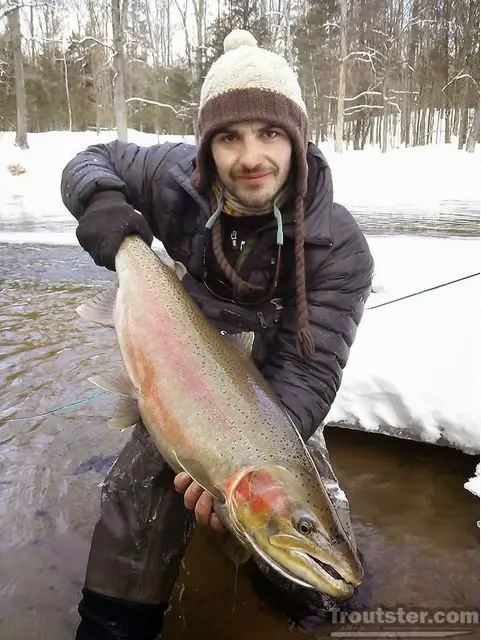This post was last updated on August 5th, 2021 at 03:40 pm
When fisheries can no longer offer healthy products for consumption or the experience needed to draw to consumers to the Great Lakes, it’s up to the officials overseeing them to ward off the trouble.That was the impetus for the introduction of two species of fish, the Great Lakes steelhead and the Great Lakes salmon, into the lakes at different key points. Both species were the answer to the long-standing problem of a lake failing to meet the needs of a thriving industry. According to the Great Lakes Environmental Research Laboratory, the commercial fishing industry has been in place since 1820 and contribute more than $1 billion to the Great Lakes economy. Sport fishery is worth even more, bringing in a whopping $4 billion to the economy.
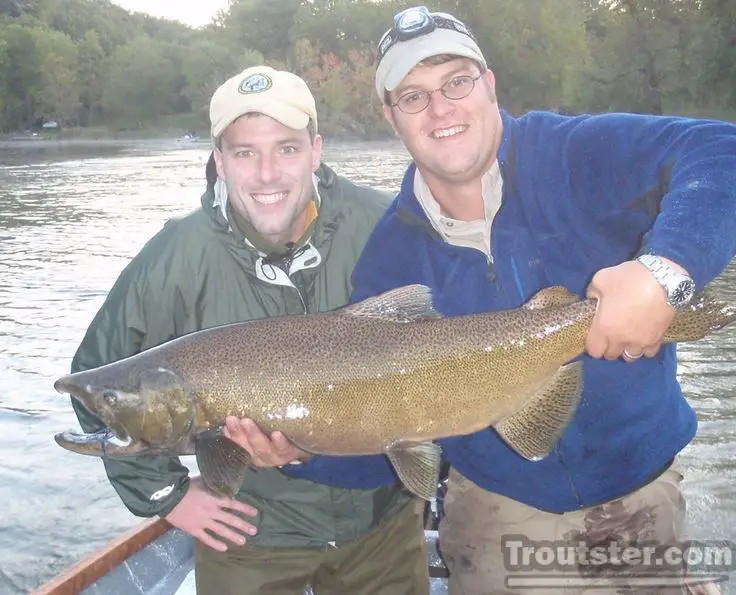
How Salmon and Steelhead Are Thriving in the Great Lakes
Salmon and steelhead are now among the prime catches for fisherman in the Great Lakes which means the decision to bring them to the Great Lakes were good ones. Looking back, that’s an easy call to make. But that wasn’t necessarily the case when the species made their way to the freshwaters of the Midwest.
Great Lakes Salmon Introduction
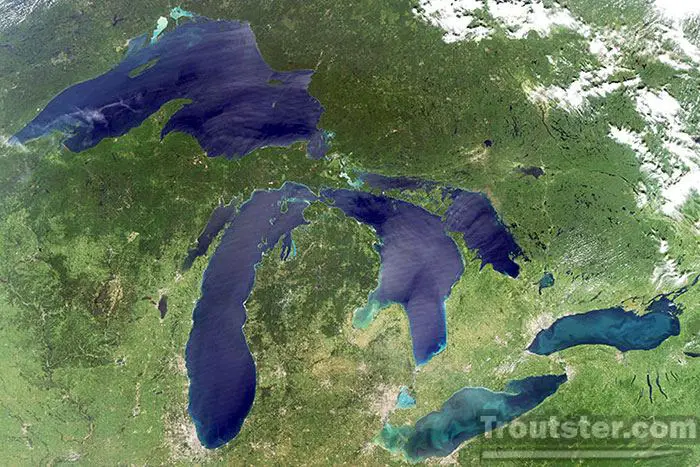
In 1964, Lake Michigan’s fisheries were in dire straits. The native lake trout had been wiped out in Lakes Michigan and Huron, thanks to overfishing and sea lampreys. Whitefish were endangered, reports say, and stinking dead alewives that washed up on the beach drove away tourists.
Something big needed to happen. The man who had to decide what that big thing would be was Howard Tanner, the new fisheries chief for the state of Michigan. The federal government was in favor of bringing back trout but ultimately Tanner would have other, radical ideas. He found out there was surplus of eggs up for grabs from out West, but it wasn’t trout eggs.
Instead, they were coho salmon eggs. It actually wouldn’t be the salmon’s first introduction to the Great Lakes as they were unsuccessfully planted in tributaries in 1873. But Tanner had an idea to re-introduce the salmon in 1966, the something big that needed to occur if the fishing industry was going to stand a chance at revival. The decision was made to stock the Platte River and Bear Creek with coho salmon smolts. Both are tributaries that lead into Lake Michigan. Tanner also ultimately decided to plant Chinook salmon as well.
The Immediate Aftermath
It didn’t take long for the results of the decision to show themselves along the lake. By Labor Day 1967, the fishery had exploded in Platte Bay with mature coho salmon, some as large as 20 pounds but the average was 12 pounds. The lakes were teeming with fish and the fisherman that came from miles away to reel them in and even national media such as Sports Illustrated took notice.
Some questioned Tanner’s decision as salmon were historically saltwater fish, not freshwater. But Tanner had researched instances where coho salmon had not only survived but thrived in freshwater.
A Michigan Department of Natural Resources report detailing the immediate years after the salmon were released in the Great Lakes. During September 1967, fall retail sales jumped $11.9 million, the report said, and the numbers kept climbing over the next two years. The salmon had an added benefit of feeding on alewives, which helped keep that population down.
Despite some doubt, the effort to revitalize the Great Lakes was a success.
Salmon in the Present Day
Today, salmon are still very much a part of the commercial and sport fishing industries. Chinook and coho salmon are still stocked in the Great Lakes.
Maintaining the level of salmon spreads across all of the Great Lakes now. The highest amount of coho salmon was stocked in Lake Michigan from 2000 to 2009, while the most Chinook salmon was stocked in Lake Huron for the same time period. The Great Lakes fishing industries are not completely without problems, but most people can look back and say the experimental program was a success.
The Introduction of Great Lakes Steelhead
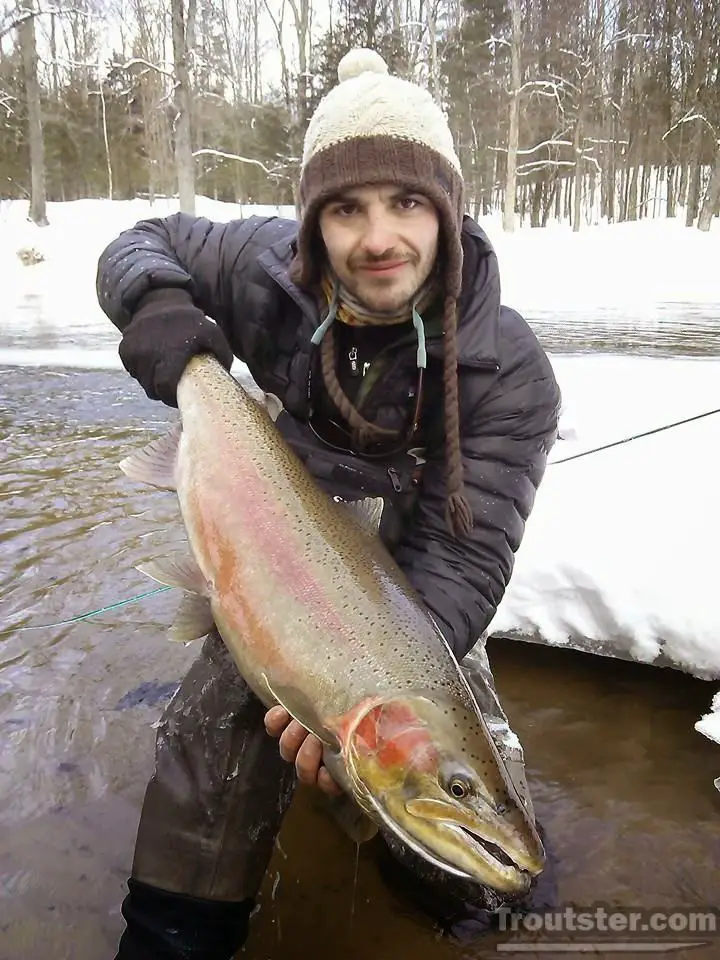
Unlike the introduction of the salmon, stocking the steelhead fish into the Great Lakes was a task undertaken at various points through history by individual states. Below is a synopsis of how each state handled the steelhead and why they handled it in the fashion that they did.
The steelhead is lauded for its appearance, impressive size and strength. In comparison to the rainbow trout, the steelhead is an average of 2 to 10 times larger in size and weight.
Illinois – Lake Erie Steelhead
Illinois began stocking the steelhead in harbors and lakefront of Lake Michigan in 1893, on the heels of Chicago’s World Fair. Though Illinois didn’t have access to strong tributaries that other states could stock in, the state would eventually reap the benefits of steelhead migrating through other state programs.
By the 1970s, fishermen were enjoying catching the fish that would migrate from Wisconsin and Michigan, with little effort from the state of Illinois itself. In the late 1980s, steelhead stocked along the lakefront of Lake Michigan in Illinois have ended up in Lake Erie and Ontario and it appears present-day stocking and planting of the steelhead is returning the favor.
Indiana
Indiana began its steelhead initiative in 1889, with the first planting in the St. Joseph River. That early program did not succeed and officials did not attempt it again until 1968. Even with help of state experts from Wisconsin, the second attempt did not yield great results.
It wasn’t until 1971, when Indiana began to experiment with a Wisconsin strain of steelhead called the Skamania, that the program finally began to show some promise. Early on, the strain seemed strong enough to handle the climate and by 1982, Indiana could finally claim a steelhead victory.
Today, the Skamania program is still going strong, drawing fishermen from across the U.S. for what has been hailed the best steelhead fishery in the Great Lakes.
Michigan – Lake Michigan Steelhead
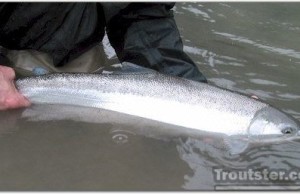
Michigan also has a long history with steelhead that began in 1876 and has been revised along the way for the last 120 years. The program started in the late 1800s included both releasing wild fish into the AuSable River with fish from Oregon and breeding them in a hatchery. The steelhead was planted in various tributaries throughout the state, which was the primary reason for its early success, experts say.
The numbers steadily grew with plantings in 1980, 1911 and 1914. An updated program began in 1966 with eggs taken from adults in other rivers. The numbers have held and increased Today, the Little Manistee River is the primary source of steelhead eggs in Michigan, generating more than 5 million eggs distributed throughout Michigan and sent to hatcheries in other states. Studies also show that the descendants of steelhead released into the waters in the 1880s have evolved and thrived.
Wisconsin
Wisconsin’s steelhead program began in 1884 but the program didn’t really get established until 1963. Twenty years later, Wisconsin decided on three strains of the steelhead to stock, which have since thrived in natural reproduction. The strains include Lake Ontario’s Ganaraska, Skamania from Indiana and the Chambers Creek strain from Lake Ontario in New York.
Looking Ahead – Salmon Species in the Great Lakes
State and federal governments are collaboratively responsible for ensuring protection of fisheries in the U.S. It will be up to these officials to continue to maintain and protect the watershed and the species of the Great Lakes. This includes preservation of the valuable commercial and sporting fishing industries and introducing non-native species such as the salmon and the steelhead to thrive if deemed necessary.
Check out this video about Great Lakes Steelhead and salmon
Great Lakes Salmon Species FAQ
Is steelhead Great Lakes really steelhead?
Yes, as discussed in this article, steelhead have been introduced over the years and have helped the Great Lakes fishing industry thrive.
When were steelhead introduced to the Great Lakes?
Steelhead have been getting introduced into the Great Lakes since the 1960s.
Can you catch salmon in the Great Lakes?
Absolutely. Chinook and coho salmon are still very prevalent in the Great Lakes

